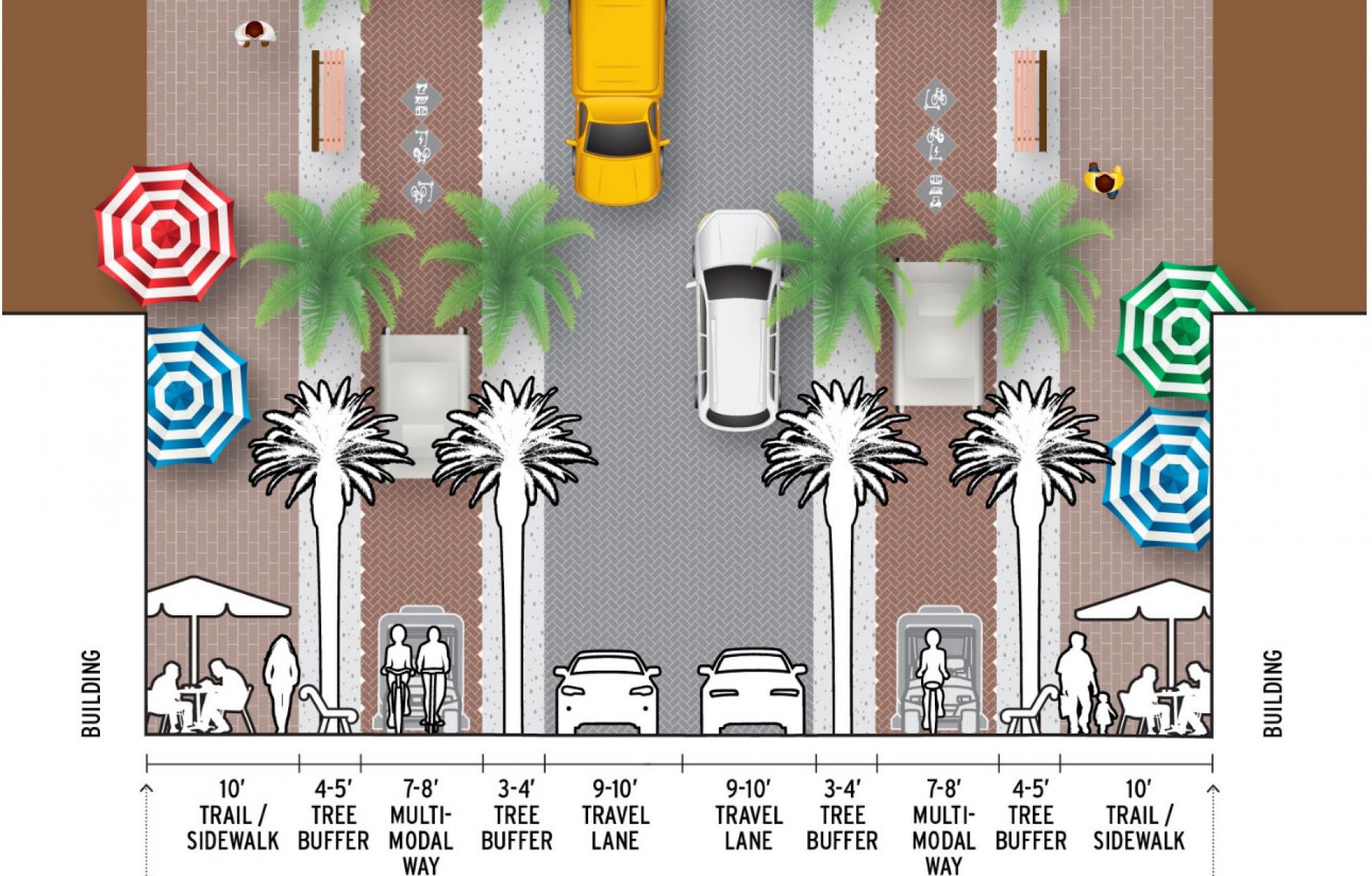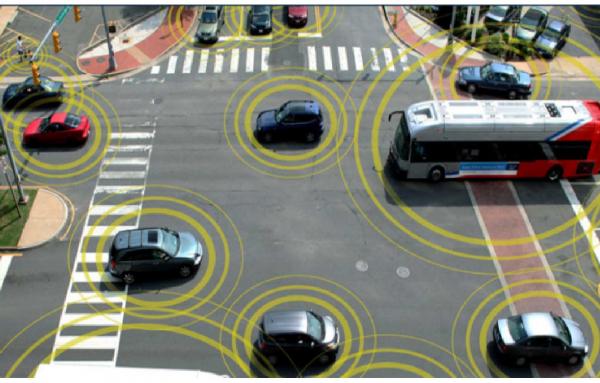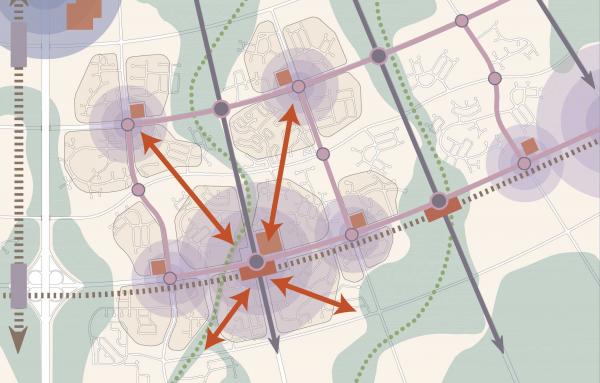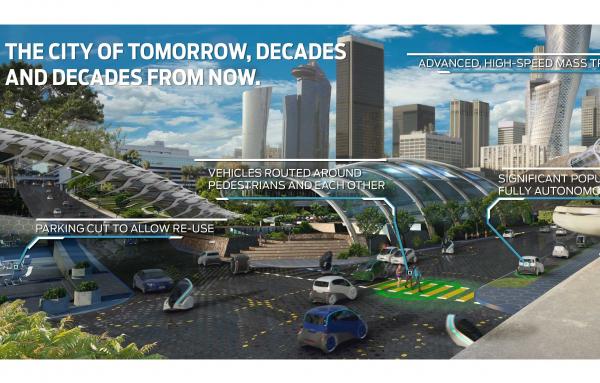
Six keys to autonomous transit that fits local communities
Forty years ago, Highway 30A in Walton County, Florida, began an experiment with New Urbanism—with the development of Seaside—that would spread across America and overseas. Now the county is looking to test new transportation technologies along 30A—like electric, shared autonomous vehicles (AVs)—that could influence mobility plans far and wide.
The 17-mile-long 30A provides access to the beachfront in Walton County, which has a rapidly growing population of 71,000. This section of beach has become an international destination due to the new urban developments like Seaside, Rosemary Beach, and Alys Beach. It is the primary engine of Walton County’s economy.
During peak season, the traffic on this road exceeds capacity, and there are few alternative routes. Providing mobility for residents, extended-stay tourists, commuting workers, and day-trippers is a top priority for the county, which is developing a 2040 Mobility Plan that will address multi-modal transportation, land use, and parking along the corridor.
Public transit is lacking on 30A—yet new technologies open up options for transit and multi-mobility that, combined with policies, could take cars off the road and provide functional transportation far into the future. Planners reported that a single developer—the St. Joe Company—has entitlements to develop housing and services for 300,000 new residents in the region over the next 50 years. “These people will be our new neighbors, and they will want to visit the beach,” says Robert Davis, the developer of Seaside, at a workshop last week sponsored by Walton County, CNU, and the Seaside Institute. “We need to move more people without putting more vehicles on the road. And we can enhance the character of 30A as it moves through villages and towns.”
Much of the national discussion for AVs has been abstract and centered on major cities. The 30A workshop—and another later this month in Buffalo, New York—will examine AVs in specific, real-world locations and a range of urban contexts. Forward-thinking urban design and policies are essential for AVs to have a positive impact on communities.
Here are six takeaways from the workshop:
1. Street design: A wide variety of flexible street design solutions are required for a place like Highway 30A. The road has diverse urban contexts, including walkable towns and areas with suburban and rural character. Also, public rights-of-way range from 50 to 80 feet wide. Appropriate designs should account for both the context and right of way (ROW) available, in addition to other considerations like traffic and pedestrian counts and key intersections. The limitations and rapidly changing nature of the technology also call for flexibility. Any change in street design along 30A needs to maintain the character of a small thoroughfare that is easy to cross on foot.
2. Transit design: Setting up a system with autonomous shuttles is no different, in many respects, from setting up a conventional transit line. AVs, theoretically, can save a good deal of money because they eliminate the cost of the driver. But the specific vehicles chosen and their capital and operating costs, headways (frequency of service), and frequency of stops are important decisions to setting up an AV shuttle system. Highway 30A has the advantage of being a single, relatively straight line that goes through the heart of walkable towns. The ROW constraints, and the need for maintaining the human-scale character of the thoroughfare, point toward smaller vehicles that could be “platooned” for greater capacity.

3. Policy: AVs are only as good as the policies that support them. Much has been written about the potential of AVs to unlock the value of land tied up in parking. This benefit will not be realized, however, if there are minimum parking requirements or no market pricing of parking to encourage drivers to make efficient use of this resource. Land use codes may need to change to allow for compact, mixed-use development.
Smart use of parking permits, unbundling the cost of parking from rents, and congestion pricing are among the policies that jurisdictions may consider to encourage the use of AV transit. In town centers, policy-makers may consider market pricing for curb access and loading. There are sections of 30A with free on-street parking. New mobility lanes will need space currently used for on-street parking. The county is also considering a new development “mobility fee” to pay for streetscape improvements. Expansion of park-and-ride locations, where visitors are encouraged to park outside walkable towns and congested areas and use alternative transportation, is being examined.
4. Micro-mobility: While AVs are evolving rapidly as a technology, electric-powered “Little Vehicles” like e-bikes, scooters, velomobiles, and golf carts are here today. In its redesign for 30A, the county is planning for these transportation options in addition to conventional bicycles and walking. Little Vehicle options offer pros and cons. Local operators can rent them—in which case they are generally returned to a single location. National firms also provide app-based rentals available 24-hours a day. The latter generally requires more management and policing—because the vehicles are sometimes left in awkward locations. Another question: Should Little Vehicles share space with AVs, pedestrians, or traffic? E-bikes can go as fast as cars in some sections of 30A.
5. Short- and long-term solutions. Any change in 30A would be phased over time. A logical place to test ideas would be in and around Seaside, where major landowner Davis is a champion of transit and alternatives to driving. Workshop planners discussed tactical tests this coming tourist season, such as converting a section of the road to a temporary multimodal “shared space.” Other ideas include testing a protected lane for bikes and micro-mobility vehicles, and setting up a “jump-queue” system allowing a worker shuttle bus to move more quickly through a bottle-neck intersection. Some policies and programs, such as charging for parking in town centers, could be implemented in the short term. Others, such as congestion pricing, would be long-term options for consideration.
6. A realistic view of technology: Although shared AVs are running in certain locations, the technology still has limitations in speed and the ability to deal with complex urban environments. These limitations generally call for a dedicated lane on many locations throughout 30A, where regular traffic will need to move faster.
CNU and its national team of experts will produce a report on 30A that offers recommendations. The organization will team with Stantec and the City of Buffalo to explore similar issues in a different context the last week of February.
The need for flexible, context-specific design will likely be the rule, rather than the exception, in planning for new transportation technology. The work of planners in Florida and Buffalo, with the help of CNU and its national experts, is pointing the way for solutions that fit the requirements of local communities.







